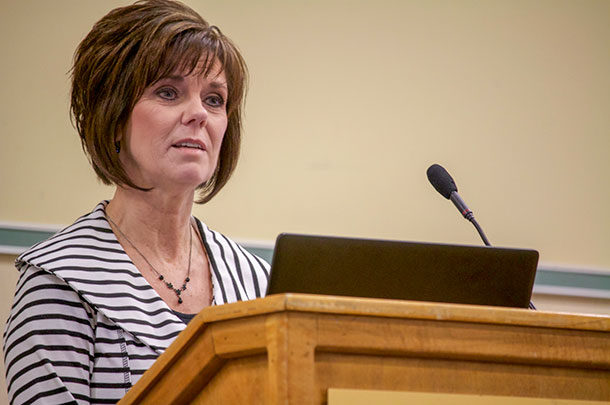At the Northwest Hay Expo in Kennewick, Washington, in January, Hampton reiterated what OPEC’s budget cuts have done to the oil market. Doing exactly what they were intended to do, the budget cuts made at the end of 2016 have tightened the oil market and increased the price from about $35 a barrel to $64 a barrel today.
“There are a lot of questions right now,” Hampton told attendees. “With that 25-dollar price increase, is it justifiable that crude oil prices remain in the $60 range this upcoming year? And are the OPEC cuts expected to continue?”
Looking at prices at the beginning of 2017, Hampton noted the ULSD futures started trading diesel at $1.70, and as of Jan. 17, diesel traded at $2.05 – about 35 cents above where prices started last year.
“Obviously, we could expect this year’s prices will be more than last year’s,” Hampton said. “I don’t anticipate we are going to see anything in the market that will oversupply the market at this point to bring values back down to 2016 levels at about 1 dollar and 10 cents, which was when OPEC made their decision to cut production.”
Hampton explained that with the price increase, it has incentivized the U.S. to increase their global production, but naturally at some point, that increase begins to offset the OPEC production cuts and starts to form a price ceiling in the market.
In addition, the abnormal artic temperatures hitting many parts of the Northeast and the Midwest have increased the demand as people are now turning off natural gas and utilizing oil to heat homes. Hampton said since we are coming into refiner re-maintenance (which cuts crude oil production and builds inventories), it could have a more positive impact if temperatures start to warm, taking the pressure off heating oil.
As gasoline and propane prices go, they will follow the direction of crude oil, and as driving season demand increases in spring and summer, gasoline futures will lead prices higher albeit with a price ceiling not too far overhead as inventories remain healthy. Propane inventories are the opposite and could support higher prices with a sustained winter, she said.
“I know a lot of people are getting impatient thinking that prices are just going to continue to go up,” Hampton said, referring to those who are waiting to fill their fuel tanks. “But this time of year, I typically hesitate.” Explaining her reasoning, Hampton said we rarely see petroleum prices stay at current levels without a price correction in late winter. ![]()

Cassidy Woolsey
- Editor
- Progressive Forage
- Email Cassidy Woolsey
PHOTO: Tina Hampton, a supply and trading manager at RE Powell, forecasted 2018 fuel prices at the Northwest Hay Expo in Kennewick, Washington. Photo by Cassidy Woolsey.











